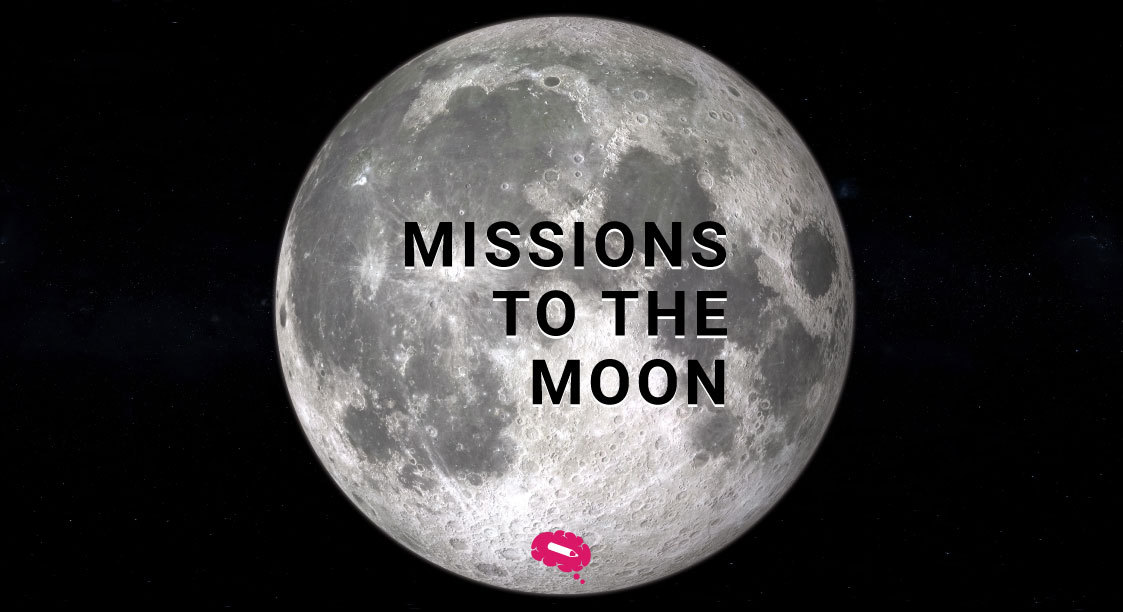Missions to the moon have been a topic of fascination and exploration for many years. With each mission, we gain more knowledge about the moon and its potential uses. While the first moon mission was in 1969, the interest in the moon has not diminished, and there have been several missions since then.
The moon has always captured the imagination of humans, and with technological advancements, we are now able to explore the moon in more detail. Missions to the moon are essential to our understanding of the moon’s surface, environment, and resources. Scientists are continually looking for ways to improve their knowledge of the moon and how it can be used to benefit life on Earth.
In this article, you will learn details about the missions to the moon and see them through the perspective of our science illustrations.
How many missions to the moon were made?
Since the first attempts to reach the moon, there have been over 100 missions to the Earth’s natural satellite. However, not all missions have been successful, and several attempts have resulted in failure.
How many times did humans go to the moon?
In total, there have been 24 manned missions to the moon, with six of them landing on its surface successfully. All six of these manned missions were part of NASA’s Apollo program, with the last successful landing being the Apollo 17 mission in 1972.
Along with manned missions, there have been numerous unmanned missions to the moon, both successful and unsuccessful. These missions were conducted by various space agencies, including NASA, the Soviet Union’s space program, and China’s National Space Administration. Some of the most notable unmanned missions to the moon include the Luna 1 and Luna 2 missions by the Soviet Union in 1959, the Surveyor missions by NASA in the 1960s, and the recent Chang’e missions by China.
How many countries have walked on the moon?
In total, only three countries have managed to land spacecraft on the moon and conduct crewed missions there. The United States achieved this feat first, with the historic Apollo 11 mission in 1969, followed by five more Apollo missions through 1972. The Soviet Union, now known as Russia, sent several unmanned spacecraft to the moon, including the first-ever successful soft landing in 1966, but their manned missions never made it past Earth’s orbit.
Finally, China became the third country to successfully land a spacecraft on the moon in 2013, with their Chang’e 3 mission, and have since sent several more missions to explore the lunar surface. As of now, these three countries remain the only ones to have successfully landed on and explored the moon.
Successful manned missions to the moon illustrated
In order to give you a new perspective on the missions to the moon, we brought you 6 new illustrations to represent each of the ones that were successful, all of them already available in our gallery. All of these missions were conducted by NASA as part of the Apollo program between 1969 and 1972.
Mission 1: Apollo 11 (1969)
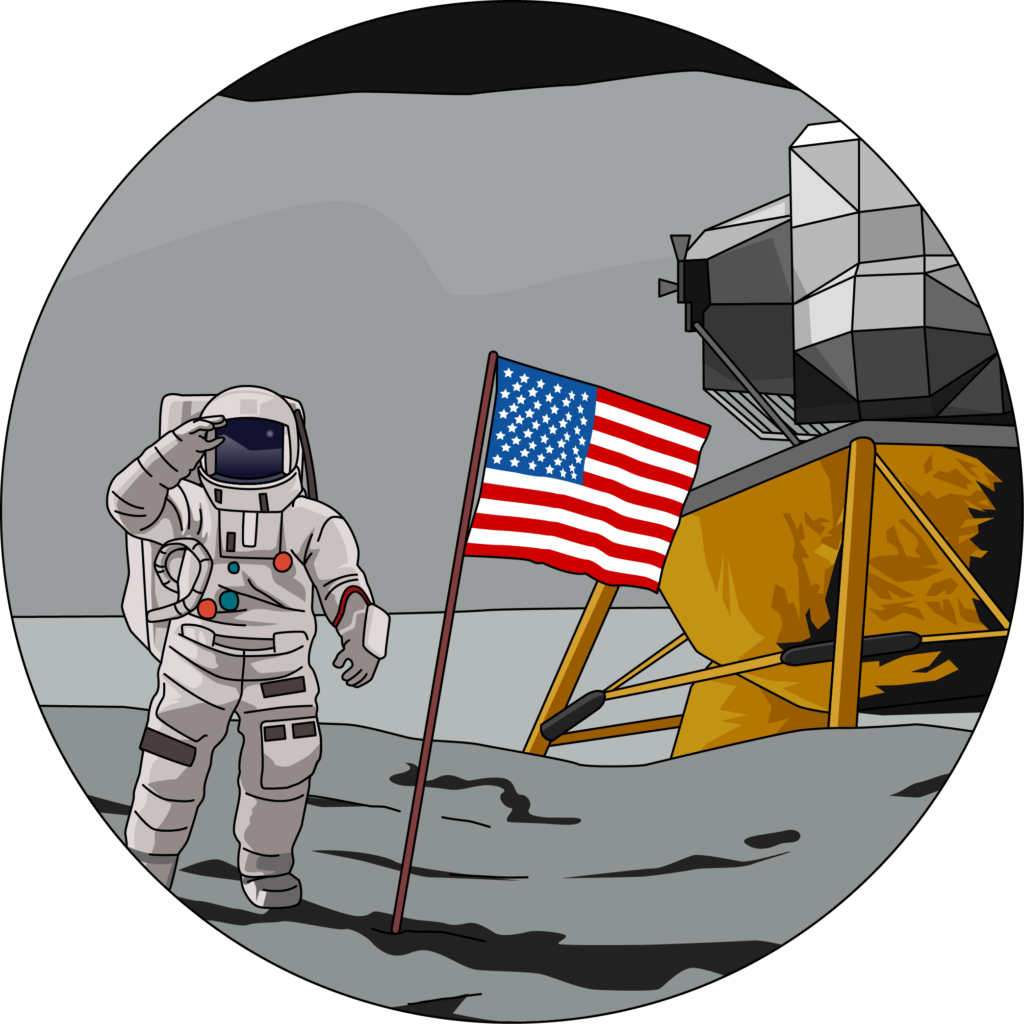
The first mission to the moon was the historic Apollo 11 mission, launched by NASA on July 16, 1969. The spacecraft was manned by three astronauts: Commander Neil Armstrong, Lunar Module Pilot Edwin “Buzz” Aldrin, and Command Module Pilot Michael Collins. The mission was a culmination of a decade-long effort by NASA to land humans on the moon and return them safely to Earth.
After a journey of approximately 240,000 miles, the lunar module, named “Eagle,” separated from the command module and landed on the moon’s surface on July 20. The mission marked a major achievement in human space exploration and sparked a new era of scientific discovery and exploration of our solar system.
Mission 2: Apollo 12 (1969)
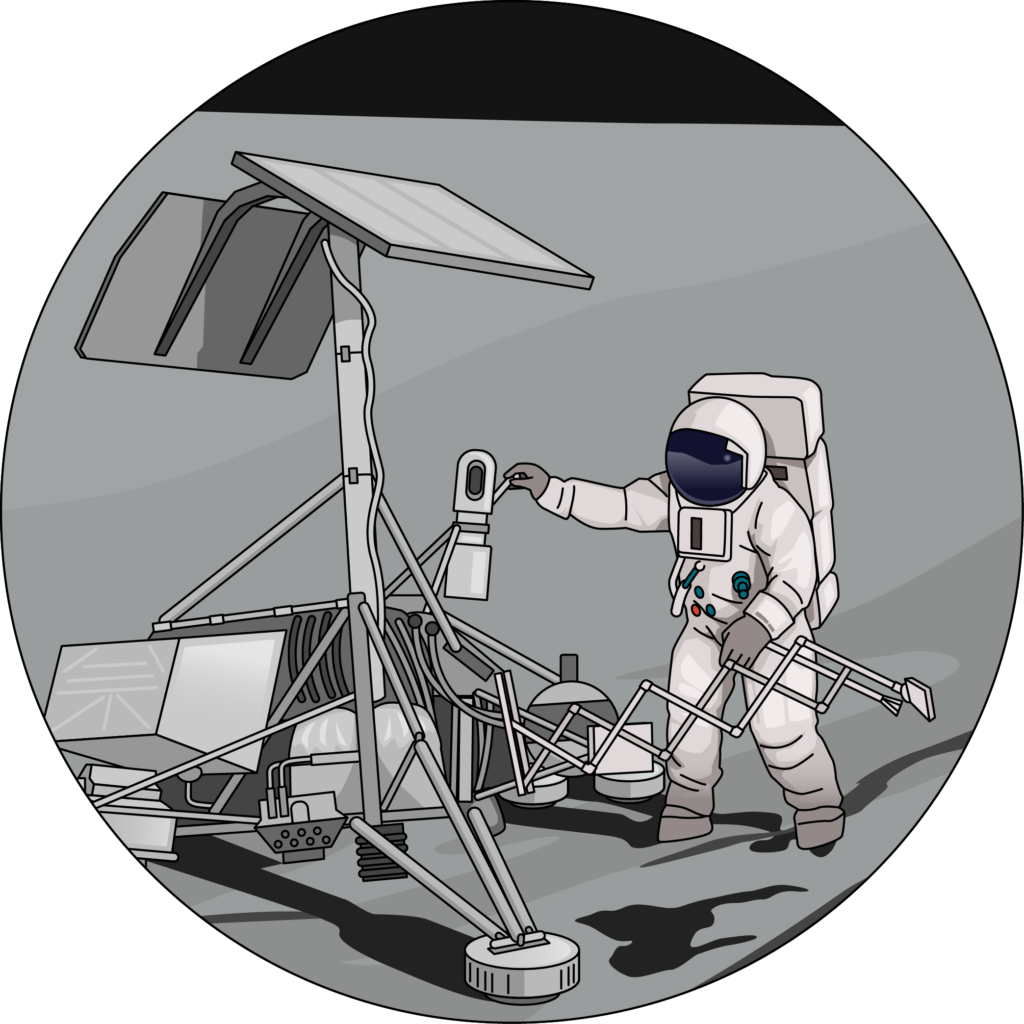
Apollo 12 was launched on November 14, 1969, just a few months after the historic Apollo 11 mission. The mission’s main goal was to conduct further exploration and scientific research on the lunar surface.
The crew conducted two moonwalks, gathering rock and soil samples and deploying scientific instruments. The mission was successful, and the astronauts returned to Earth on November 24, 1969. Apollo 12’s achievements helped lay the groundwork for further exploration of the moon and deepened our understanding of our nearest celestial neighbor.
Mission 3: Apollo 14 (1971)
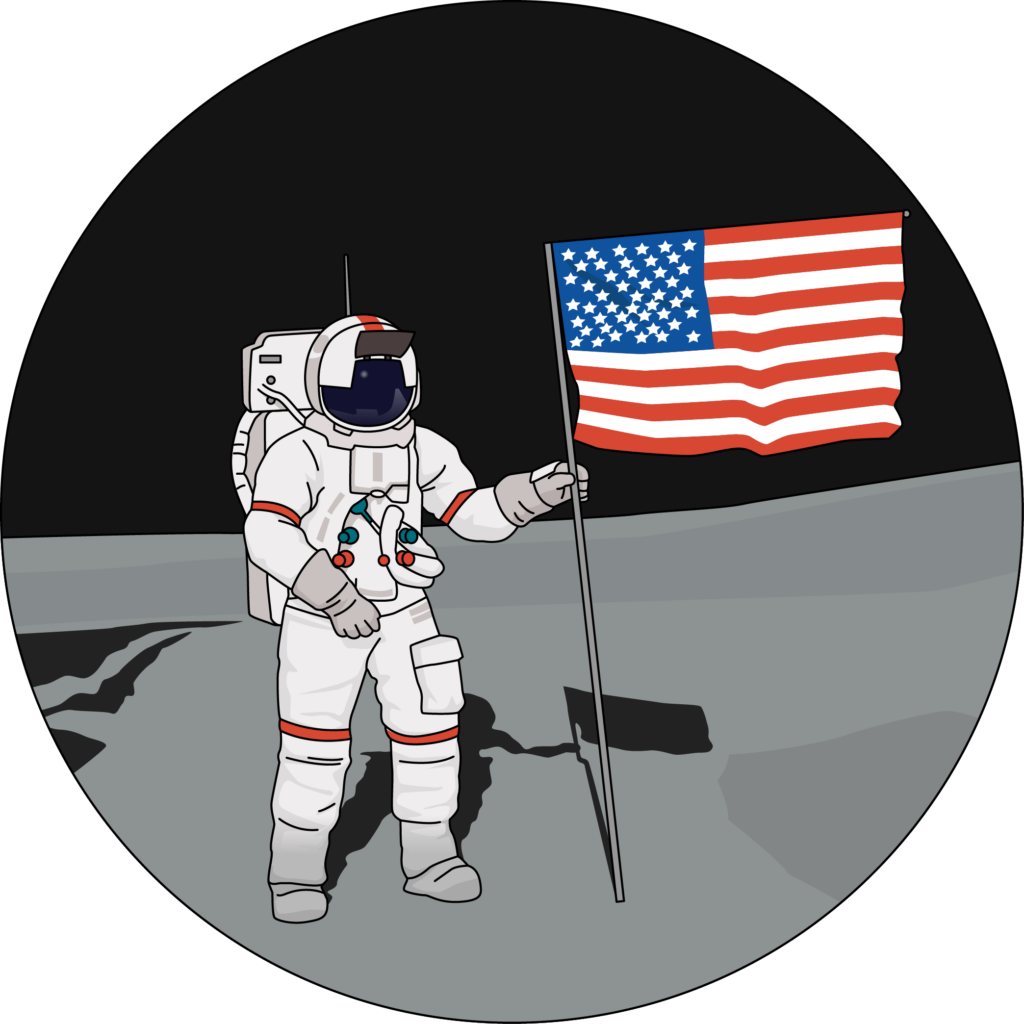
Apollo 14 was the third successful lunar landing mission by NASA, launched on January 31, 1971. The spacecraft was crewed by Commander Alan Shepard, Lunar Module Pilot Edgar Mitchell, and Command Module Pilot Stuart Roosa.
The primary objective of the mission was to collect rock and soil samples from the Fra Mauro highlands region of the moon, which was believed to be a volcanic area, and conduct several scientific experiments. During the moonwalks, the crew collected over 90 pounds of samples, installed scientific instruments, and conducted seismic experiments.
Mission 4: Apollo 15 (1971)

Apollo 15 provided invaluable data that deepened our understanding of the moon’s origins, evolution, and geologic history, and set the stage for more complex future explorations. Their mission focused on advancing our understanding of the moon’s geology and conducting more sophisticated scientific experiments on the lunar surface.
During their three moonwalks, they used the Lunar Roving Vehicle (LRV) to cover a greater distance and collect over 170 pounds of rock and soil samples, the largest collection from any lunar mission. Meanwhile, another member of the crew orbited above them, conducting experiments and capturing images with a high-resolution camera.
Mission 5: Apollo 16 (1972)
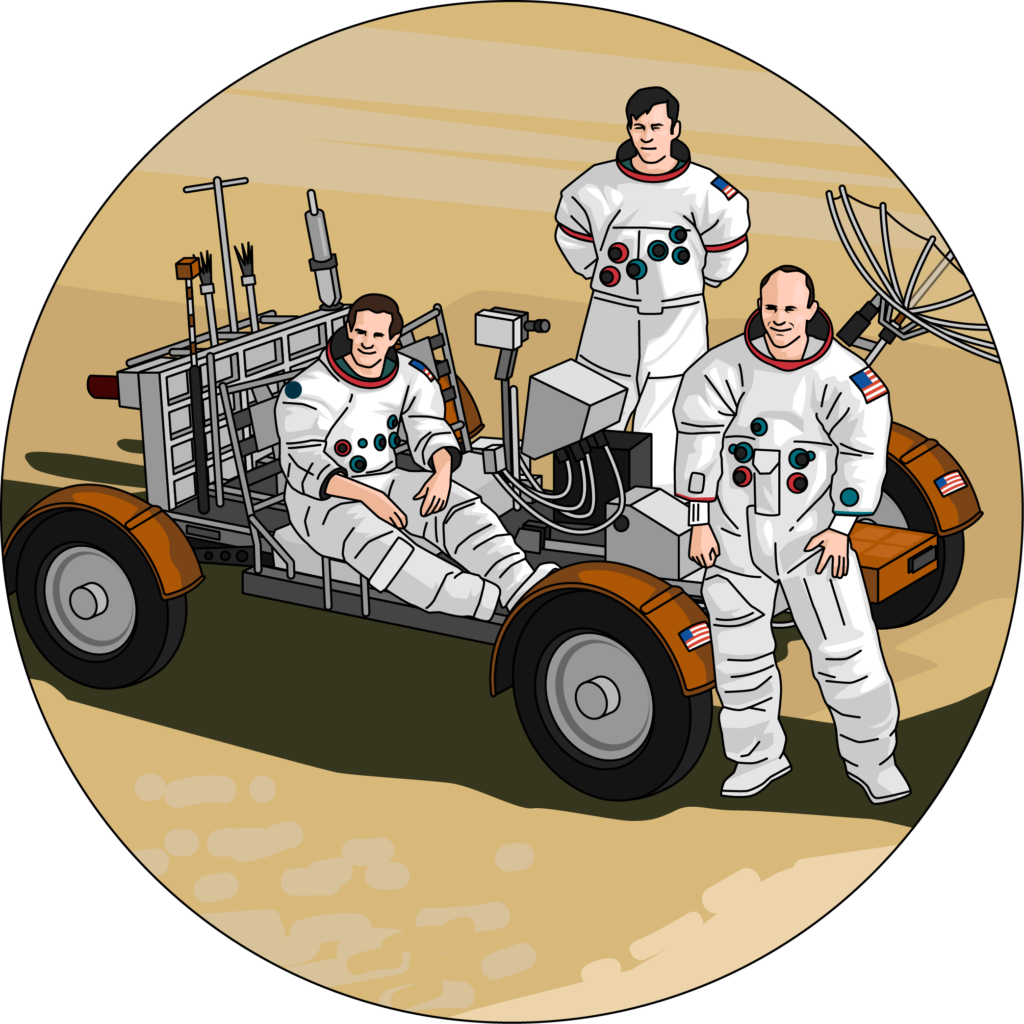
The fifth mission to land on the moon was Apollo 16, launched by NASA on April 16, 1972. The mission’s primary objective was to explore the lunar highlands and conduct scientific experiments on the moon’s geology.
They collected over 200 pounds of rock and soil samples and deployed several experiments while Mattingly orbited above them. The mission was a success and provided valuable new data about the moon’s composition and history.
Mission 6: Apollo 17 (1972)
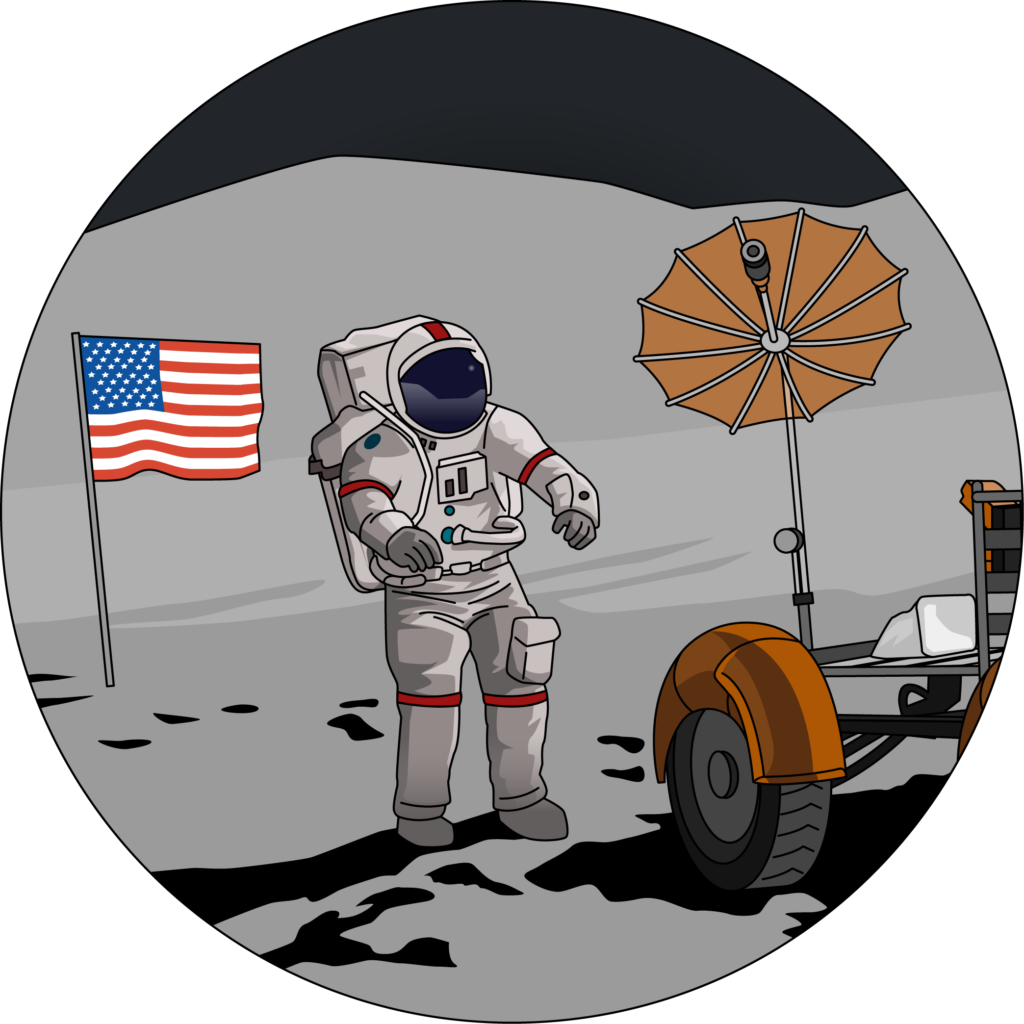
The last successful mission to land on the moon was Apollo 17, launched by NASA on December 7, 1972. Its primary objective was to conduct a detailed geological survey of the Taurus-Littrow Valley region of the moon. The crew spent over 22 hours on the moon’s surface while other members remained in lunar orbit, conducting experiments and photographing the moon’s surface.
The mission was a complete success and returned with an abundance of new information about the moon’s geology, mineralogy, and history. It was the final manned mission to the moon conducted by NASA. No manned missions have returned to the moon since the Apollo program ended, but there are plans for future manned missions to the moon in the coming years.
All these new moon mission illustrations are available in our gallery.
Modern missions to the moon: the current scenario
One of the most recent missions to the moon was the Chang’e-5 mission launched by China in 2020. The mission was a success, and it brought back soil samples from the moon’s surface. The samples were studied to gain a better understanding of the moon’s formation and its geological history. This mission was a significant achievement for China, and it marked a milestone in their space exploration program.
Another mission to the moon that garnered a lot of attention was the Artemis program launched by NASA. The program aims to land humans on the moon again by 2024, and it is expected to have a significant impact on space exploration. The Artemis program is expected to help us better understand the moon’s resources, its environment, and its potential uses. With this program, we could develop technologies that would allow us to live on the moon and use its resources.
Next NASA missions: The Artemis Program
The Artemis program has several missions planned, and each one is aimed at achieving specific goals. The first mission, Artemis I, was launched uncrewed in 2021, and its goal was to test the Space Launch System and the Orion spacecraft. The second mission, Artemis II, is expected to be a crewed mission that will orbit the moon soon, in 2024. The third mission, Artemis III, is expected to land humans on the moon’s surface. These missions are a significant step forward in our exploration of the moon, and they are expected to help us learn more about the moon’s potential.
In addition to the Artemis program, there are several other missions planned to the moon in the near future. The VIPER mission, set to launch in 2023, aims to explore the moon’s south pole region and look for water ice. The CLPS program is also expected to conduct several missions to the moon, and these missions will focus on delivering payloads to the moon’s surface.
The importance of modern missions to the moon
Missions to the moon are essential for our understanding of the moon and its potential uses. With each mission, we gain more knowledge about the moon’s surface, environment, and resources. This knowledge can be used to develop technologies that will allow us to live on the moon and use its resources. The moon is a valuable resource, and it has the potential to help us in several ways.
One of the ways the moon can be used is for space exploration. With the moon as a base, we could launch missions to other planets and explore the universe in greater detail. The moon’s resources could also be used to build spacecraft and other technologies needed for space exploration. With the moon as a base, we could develop technologies that would make space exploration more accessible and cost-effective.
Represent your research graphically with Mind the Graph
Transform any complex data into beautiful and easy-to-understand infographics. Combining the largest scientifically accurate illustrations in the world with simple design tools is the secret to making your research paper more relevant and accessible to your audience. Subscribe to Mind the Graph and start exploring our tool.

Subscribe to our newsletter
Exclusive high quality content about effective visual
communication in science.

